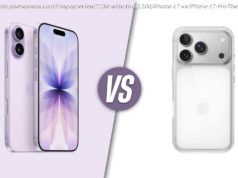More Californians have broadband Internet than ever before but new “underconnected” class poses concerns, according to UC Berkeley study.
California faces a growing class of “under-connected” households that rely only on smartphones for online access, a trend that may worsen the state’s economic inequality, according to a report released Monday by UC Berkeley Institute of Governmental Studies.
In 2017, more Californians — 87 percent of the state’s households — had broadband Internet connectivity at home. But of those, 18 percent had smartphones as their only computing devices, more than double the 8 percent just two years earlier.
While smartphones provide a cheaper, more portable way to get online, their limited computing power hinders the development of basic computing skills, leaving smartphone-only households much less likely to be integrated into California’s booming tech economy, experts said.
“Our efforts are to get everybody online to minimize the inequalities in our society and economy, ” said Sunne Wright McPeak, president of California Emerging Technology Fund (CETF) which sponsored the study. “Internet for all now is a 21st century civil right.”
Thirty-four percent of those without broadband at home cited the expense. They also acknowledged they felt disadvantaged in developing new career skills or taking classes, according to the poll, which surveyed more than 1,600 adults in six different languages.
“There is a real desire by lower income people to get workforce skills, ” said McPeak. “They have expressed to us in focus group after focus group that they know it’s important for the future of their kids but for themselves as well.”
To bridge the gap, California lawmakers wrote the Internet For All Now Act of 2017, which would invest funds into broadband infrastructure projects in low-income and rural areas. The bill passed the Assembly, 67-5, earlier this month and has moved onto the Senate.
Smartphone-only households were also less likely to use the internet for their personal benefit. For example, 78 and 74 percent of households who owned a computing device like a desktop or a laptop banked and obtained personal health information online, respectively; only 46 and 41 percent of smartphone-only households performed the same tasks.
“The population who are smartphone-only is using the device for far fewer activities, ” said Berkeley IGS director Mark DiCamillo. “The downscale segment of California’s household population is the segment least likely to be connected.”
Certain demographics lagged significantly behind in owning internet access. Those who were older than 65, born outside the United States, disabled or did not graduated from high school were at least 10 percentage points likely to not have Internet at home compared to their counterparts.
When broken down by race, Latinos were the least connected. Among Latinos, Spanish-speaking Latinos only reported 70 percent with broadband access and only 32 percent had a computing device.






